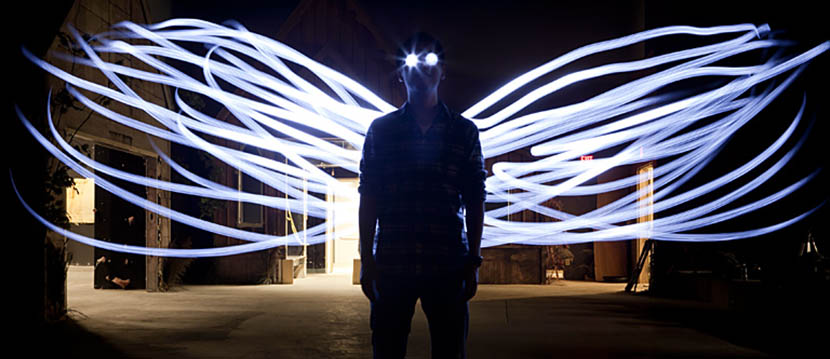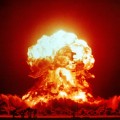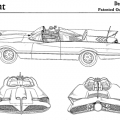Battle scenes are incredibly common in superhero comics and superhero stories. Every single story it seems involves some sort of fight between superheroes and super villains, or superheroes and the thugs de jour. In many cases, it’s actually quite refreshing to run across a superhero story that doesn’t involve some sort of punch up.
Yet, despite the presence of all of these superhero battles going on within comics, very few of them actually serve to do anything other than provide an excuse to show the superheroes in action. After all, back in the bad old days of comic books in the 1960s and 1970s, the villain of the month was introduced perpetrating some crime, and the superhero stepped in to try to deal justice to the super villain.
In a short superhero story, the one fight ends with the villain being soundly thrashed and led away in handcuffs. In a longer story, the villain escapes the first battle, leaving the superhero suffering from the mild embarrassment of being caught in the villain’s trap, and then a second climactic battle happens towards the end of the story. Again, the villain is soundly thrashed and let away in handcuffs.
In the 1980s and 1990s, superhero battles evolved to a certain extent to where the villains were necessarily led away in handcuffs but were allowed to serve as the target of the superhero’s angst. Yes, X-Men, I’m looking at you. After all, how many times in a Wolverine story did Sabertooth just happen to appear out of nowhere to provide some excuse for action scenes?
But, this is the 21st century. We can take a look at how to improve battle scenes within superhero storytelling, and we can see if we can come up with some useful guidelines that can then be applied to your next superhero story.
As always, your mileage may vary.
The Purpose of Superhero Battles
Let’s start by keeping in mind that we are telling stories here, so the battles themselves have to serve an integral storytelling function. They either have to:
- advance the plot, or
- reveal something about the characters that are involved,
- or both.
From a pure storytelling standpoint, those are the only purposes of battles. While it might be tempting to say that battles can increase the excitement level of the story – and they do – they still have to have a storytelling purpose. Otherwise, they’re simply gratuitous, and the story could survive if the battles were removed. As writers, we have to keep in mind that the readers know when something is gratuitous. They know when we’re padding the plot, and when we are simply tossing stuff in for the spectacle. They also know when a storytelling element is critical, and if that element is done well, then you convert a reader into a fan.
We’re going to look at each of these in more detail in later articles. For right now, let’s start by understanding the distinction between the battles that advance the plot, or the battles that reveal character.
Superhero battles that advance the plot:
Superhero battles that advance the plot serve to build up tension and increase the stakes for the protagonist. As the hero goes through each combat, they are trying solutions to the problem created by the villain.
Novelist John Brown in one of his writing workshops at a Life, the Universe, and Everything gathering (LTUE) in Utah put it this way. He suggested writing your story as a series of decision loops that each hero goes through in the journey towards the climax, and each time they go through a loop, the situation becomes more and more dire for the hero.
Each decision loop is as follows:
- The hero is faced with a problem.
- The hero decides to take action to solve the problem.
- If the hero succeeds, he solves the problem but there is a bigger problem that flows directly from his solution. For example, the hero thrashes the villain, stopping a crime in progress, but ends up facing down a corrupt police force that wants to arrest him. Or, the hero thrashes the villain, only to find that the villain is a pawn in a much larger plot. Or, the hero thrashes the villain only to find that the heroes secret identity is uncovered in the course of the battle. Or… you get the idea. Each solution increases the stakes.
- If the hero fails, he not only does not solve the problem, but the problem is made worse in a way that flows directly from his failure. For example, the hero attempts to stop crime in progress. The villain gets away, and the police now wants to arrest the hero for interfering in their operations. Or, the villain succeeds in activating a devious device which turns people within a certain radius into zombies. Or, the hero is soundly beaten by the villain and unmasked before the cameras of a ravenous news media. Again, each failure increases the stakes.
Wash, rinse, and repeat until the hero finally solves the problem and emerges victorious. This way, by making the situation worse and making the stakes higher with each battle, regardless of whether the hero wins or loses, we have battles that advance the plot towards the ultimate climax where the hero strives for final victory or faces final defeat.
Check out John Brown’s workshop with Larry Correia here:
[youtube https://www.youtube.com/watch?v=0bS7sSy2GMM&list=PL8B94E8B54E235F72&index=2]
Superhero battles that reveal character:
Battles that reveal character are more about how the characters fight as opposed to the actual fights themselves. We’re not only looking at the tactics that a hero uses, but also the battles that they choose to fight and the battles they choose to avoid.
For example, Superman and Spiderman try to protect the innocent as much as possible. This is why they try to lead villains out into remote areas where risk to life and property can be minimized. Wolverine and the Hulk, on the other hand, are more berserker characters, and they really don’t care about collateral damage.
When we are looking at revealing character in the course of the battle, we should first ask whether the character would actually fight this battle. Contrary to the old trope that it was the villains who would attack the heroes and the heroes would react to the villains aggression, I would argue that heroes have a choice as to whether to react or not.
If we look at a character like Batman, and he is being hunted by a team of super villains, he can either choose to confront them at first opportunity, or he could fade into the shadows, observe, and then pick the perfect time to strike when he can take them all out with a minimum of risk to the bystanders.
What does the second course of action tell us about Batman?
- It tells us that he is strategically minded because he is going to be the one who picks when the battle happens.
- It tells us that he is a brilliant character, because he is going to learn as much as he can from his observation before confronting the villains with a plan to defeat them based upon his reconnaissance.
- It also tells us that he is compassionate towards the innocent, because he wants to make sure that bystanders aren’t injured.
- Finally, it tells us that Batman understands the value of his spooky reputation. By fading into the shadows, he adopts methods that evoke mystique and inspire fear in his opponents.
Contrast this to what we learn about Batman should he choose to confront the villains right at the first opportunity.
- It tells us that he is decisive because he commits to taking action immediately.
- It tells us that he is a character who understands the importance of overwhelming the opponent before the opponent has a chance to react.
- It also tells us that he is a confident character, because he has faith in his abilities to take down the threat based on just a cursory observation.
It’s the same character, faced with the same situation, but deciding which battle he fights and how we fights the battle tells us a great deal about what type of character Batman is.
More to come:
We’re going to be taking a closer look at superhero battles in future articles on this site. We’ll start by taking a closer look at the 3 different types of battles that advance the plot. We’re also going to take a look at superhero tactics, angst, and fear, and how they would reveal character in the course of the superhero battle. Keep checking back for more superhero writing tips to come.
About the Featured Image for this post: This image is Light Painting by VFS Digital Design and is used under a Creative Commons Attribution License. The image is cropped from the original.
All trademarks and characters are the property of their respective owners. No challenge to any trademark status or ownership is made or contemplated. Any images used in this post are either used under Creative Commons licenses, or under the Terms of Fair Use under International Copyright Law which allows such use for comment and review purposes.





